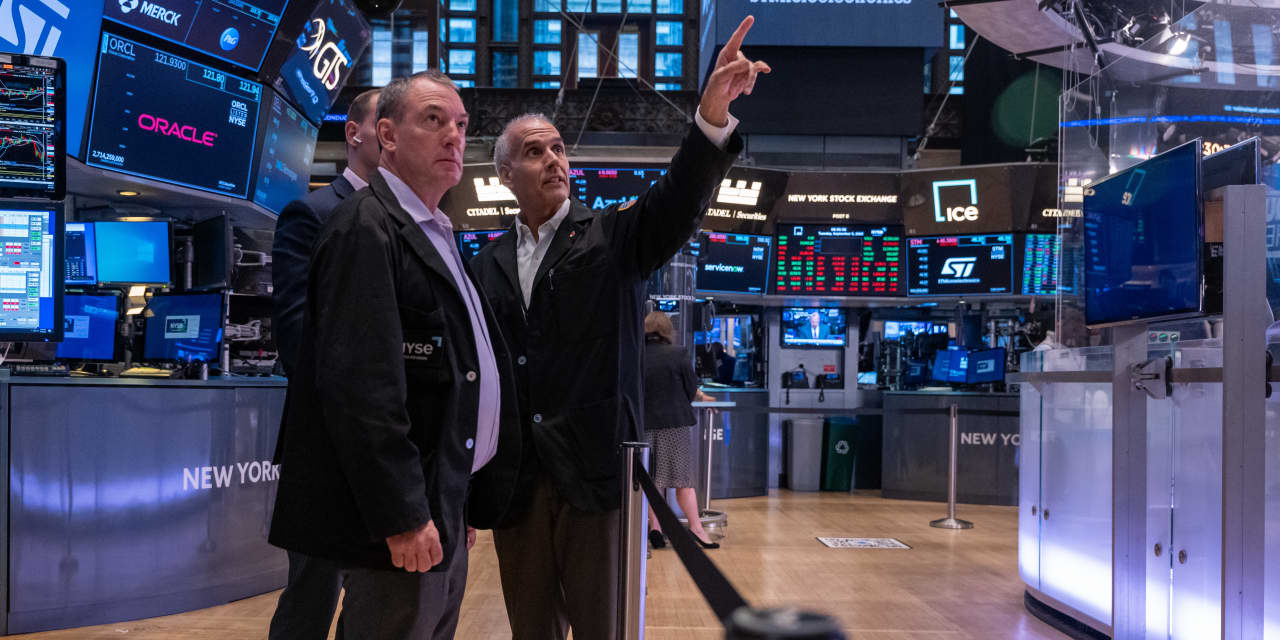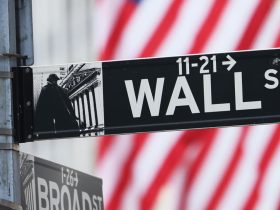Fire the confetti cannon and high-five the dog: U.S. companies are expected to report zero quarterly earnings growth in the weeks ahead.
Maybe I oversold that. But it’s better news than it sounds. For three straight quarters, S&P 500 earnings have fallen year over year. So zero is a step in the right direction. And things look even better with some adjusting, excuse-making, and outright fantasizing. Mostly.
For example, oil prices are up since June, but the average third-quarter price was still down 10% from a year ago. As a result, energy earnings are expected to come in 38% lower—the worst of any sector by far. On Wall Street, extreme results that make people happy are called leadership, but sad ones are statistical anomalies, and they get stripped out—that’s Investment Banking 101. Ex-energy, S&P 500 earnings are predicted to grow 5%.
OK, keep energy in. But note that the S&P 500’s third-quarter earnings-growth forecast of zero is weighted, like the index itself, by company size. The median, or middle, earnings-growth forecast is a positive 2%. That might not seem like a significant difference, but I’ll bet equal-weight indexers are fist-pumping right now. All 12 of them.
Also, remember that zero is only the consensus estimate. It’s formed through an elaborate ritual between companies and analysts of suggestion, coyness, and setting up success—it’s like peacocks mating, only the preening happens at the end. Over the past 10 years, company earnings have surprised to the upside nearly three-quarters of the time, by an average of 6%.
So actual third-quarter earnings should be up solidly. But how much? Earnings estimates usually fall from the end of one quarter to the cusp of reporting season for the next—that’s an important part of the whole peacock thing. The average decline is around 4%. But this time around, estimates have held steady since the end of June. That sounds like a positive, but
Goldman Sachs
takes it to mean that analysts were “pessimistic” in prior quarters but are setting a “higher bar” now, so upside surprises are “likely to be smaller.” Does that make sense? If so, kindly explain it to me.
Anyhow, BofA Securities is predicting actual, non-lowballed third-quarter earnings growth of 4%. It points to corroborating evidence from what are called early reporters.
See, earnings season traditionally kicked off with results from an aluminum company named
Alcoa
(ticker: AA), because it was the first to report among companies in the Dow Jones Industrial Average. But it went through a Dow ejection, spinoff, name change, and private-equity buyout, so the company called Alcoa today is a mere smelting stub of the one from before. Along the way, earnings season needed a new kicker-offer. Big banks were chosen by informal market agreement, meaning three or more people saying it on CNBC.
JPMorgan Chase
(JPM),
Wells Fargo
(WFC), and
Citigroup
(C) report results on Friday.
But results have already trickled in for 21 companies in the S&P 500, many with weird fiscal years that result in offbeat earnings dates. More than three-quarters of these early reporters have produced upside surprises. BofA finds a 70% correlation between that number and the proportion of upside surprises for all companies.
Forecasts for future results look even better. Consensus estimates have fourth-quarter earnings growing 8%. Take some off for downward revisions, and then add it back on for upside surprises, and you might end up where you started. Goldman reckons the result will be strong enough to pull full-year 2023 earnings up 1% over last year, and it puts 2024 growth at 5%. BofA forecasts 2% growth this year and 6% next year.
Digging into the current earnings season, the world might be transitioning to a french-fry-driven economy. Earlier this month, a company called
Lamb Weston Holdings
(LW), which makes straight, crinkly, curly, and waffle varieties, not to mention tater tots—and is big enough to be in the S&P 500—reported earnings that were 50% above estimates, sending its shares up 8%. That’s the biggest upside surprise of the season so far by a mile.
Nike
(NKE) and
FedEx
(FDX) had upside surprises and stock gains, too.
For bank results, data and research group
FactSet
says to expect weak loan growth, especially mortgages, and rising loan-loss provisions, offset by “draconian cost-control programs,” which could help the sector step over a low bar on earnings. The communications sector is expected to report the largest third-quarter earnings gain, at 31%. It includes
Facebook
owner
Meta Platforms
(META), which has found religion on costs and whose quarterly earnings are expected to more than double. The consumer-discretionary sector is expected to come in second, with 22% earnings growth. Without
Amazon.com
(AMZN), the growth forecast would be 14%.
Big Tech isn’t a sector, per se. But Goldman points out that the seven largest names contribute 17% of S&P 500 earnings today, estimated to hit 24% by 2025, but also that three are targeted in regulatory lawsuits. So I guess try to root for either consumer empowerment or a rising 401(k), but not both.
The biggest earnings miss of the quarter so far according to FactSet is, um,
FactSet Research Systems
(FDS), which came up 16% short.
Future earnings beats and misses would be more helpful than recent ones, of course. BofA has taken a crack at predicting them. Its model is based on the observation that past earnings surprises tend to predict future ones in the same direction, and, crucially, on the assumption that its own analyst forecasts are more accurate than the rest of the Street. It cross-referenced the companies it found with levels of ownership by fund managers. Candidates for upside surprises that are underowned by funds are
Arch Capital Group
(ACGL),
PulteGroup
(PHM),
Home Depot
(HD),
Cintas
(CTAS), and
Western Digital
(WDC). Negative surprise candidates that are overowned are
Charles Schwab
(SCHW),
Robert Half
(
RHI
), and
Equifax
(EFX).
Write to Jack Hough at [email protected]. Follow him on Twitter and subscribe to his Barron’s Streetwise podcast.
Read the full article here













Leave a Reply